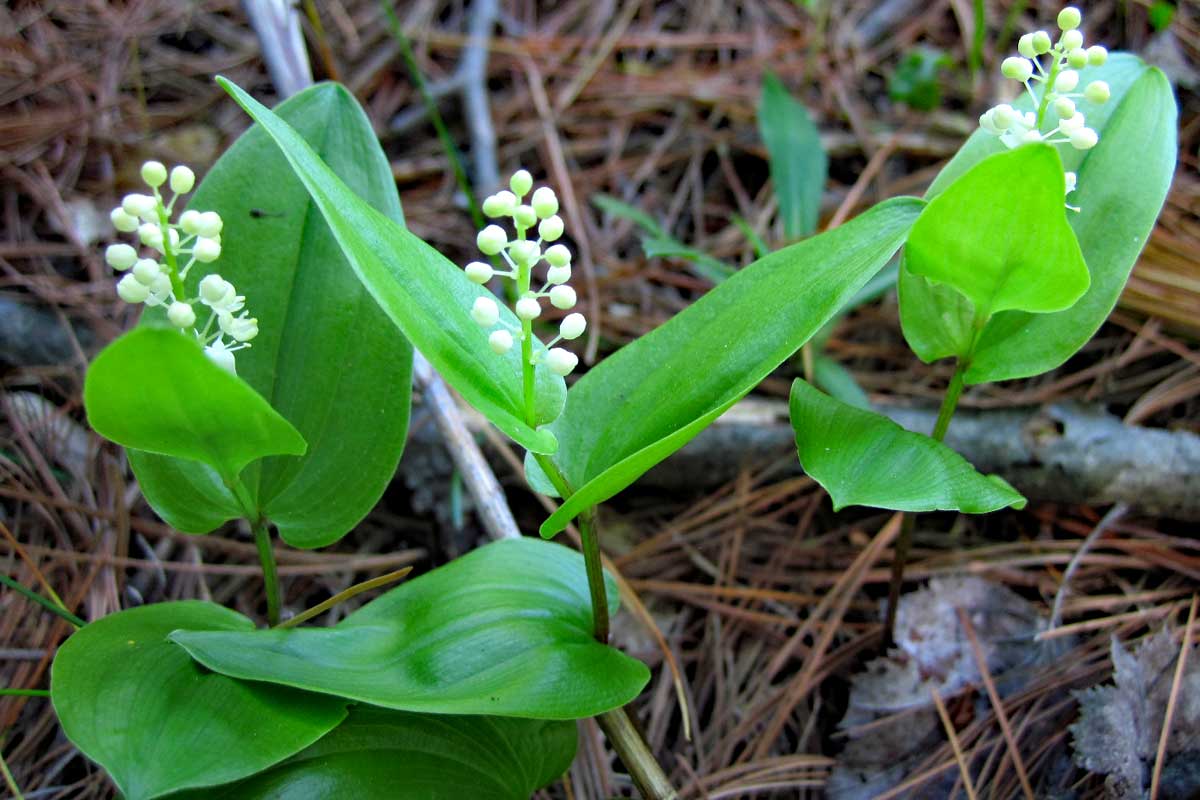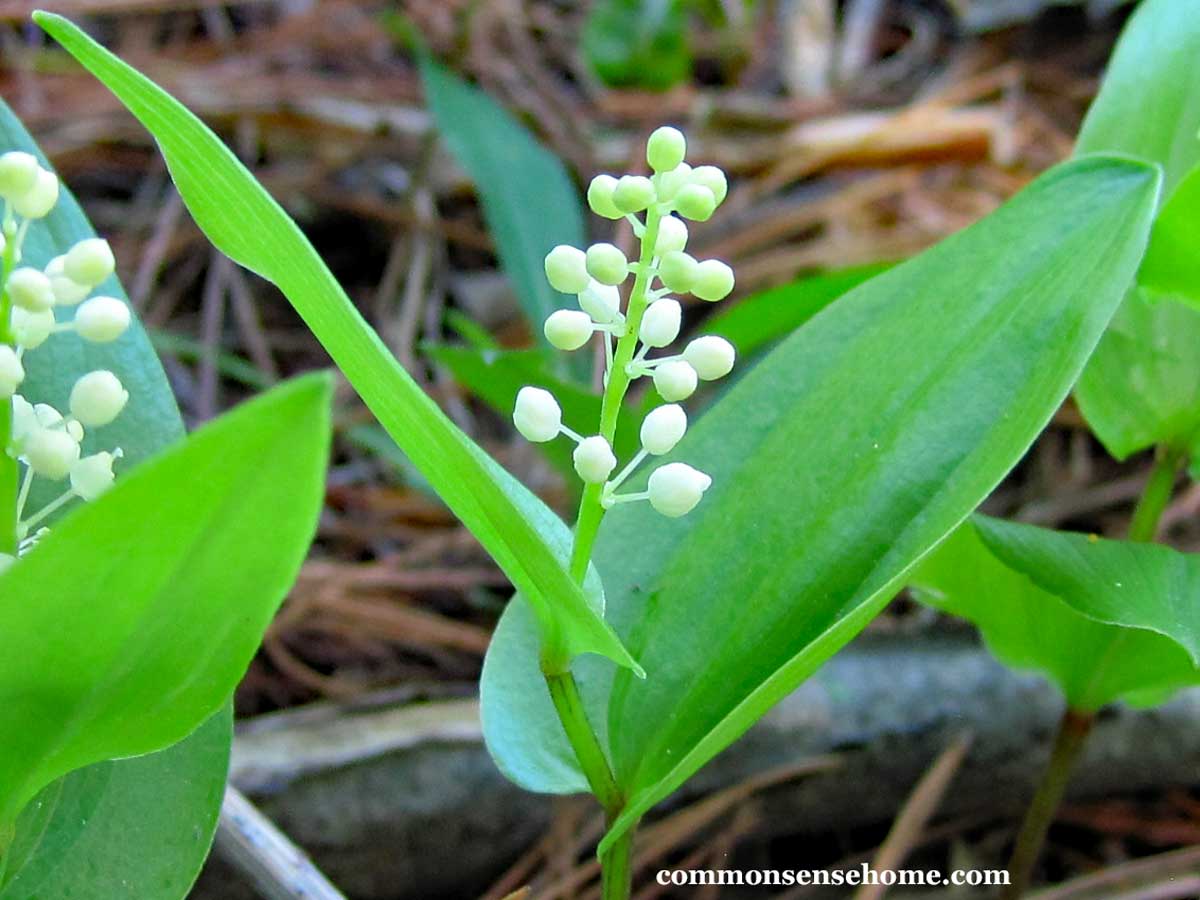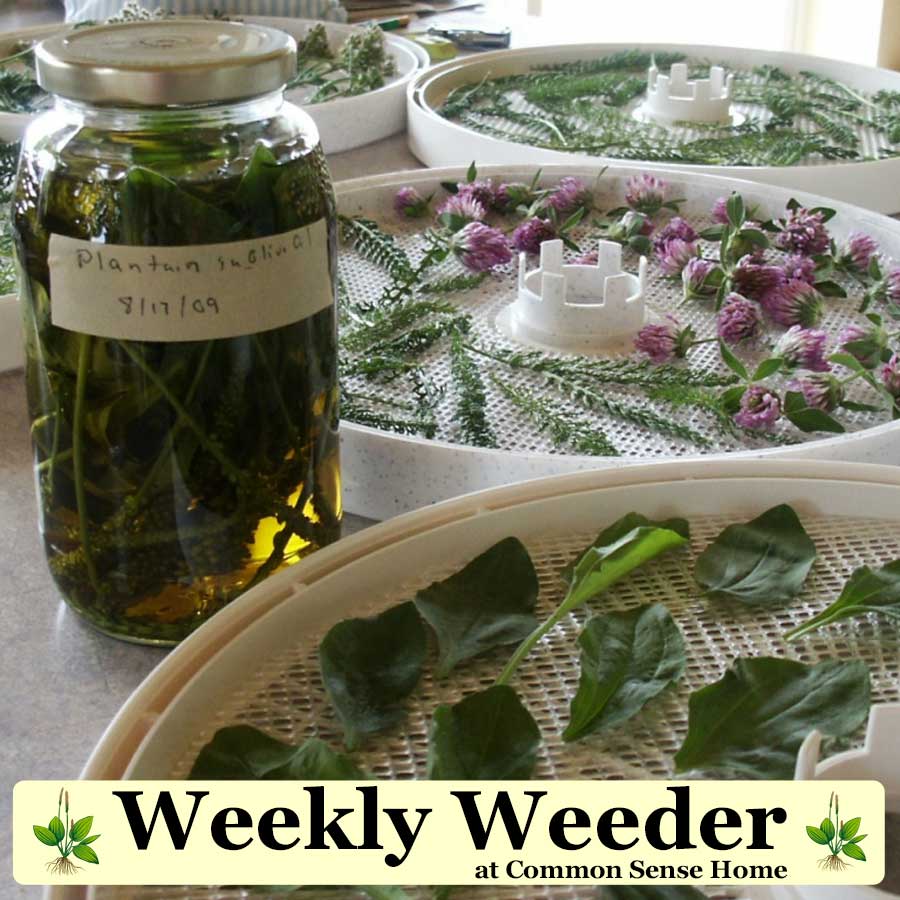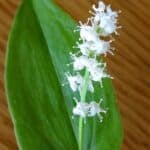Canada Mayflower – False Lily of the Valley
This post may contain affiliate links. Read my full disclosure here.
Today’s featured plant is Canada Mayflower, Maianthemum canadense. We’re sharing how to identify and use this North American native wildflower.

Range and Identification of Canada Mayflower
Canada Mayflower is native to North America. It’s found throughout Canada, even into the arctic reaches, and in much of the northern and eastern of the United States. It prefers shade, and coves forest floors in both deciduous and conifer woodlands.
Canada mayflower is a perennial, so it comes back year after year. It spreads by rhizome, so a patch of “plants” may actually all be connected to a single root system.
The article A Most Common Wilding sings the praises of Canada mayflower as a native groundcover for shade. It adapts to almost any soil type and associates with a wide range of other plant species and ecosystems.
Plants are low growing, only 2-6 inches in height (5-15 cm). We found them sprinkled on the forest edge and carpeting small clearing on the forest floor. Most plants will have only 2 leaves, although some will have three.
The stems zigzag between the alternating leaves, ends in a cluster of small white flowers at the top of the plant. Leaves are lance shaped and glossy, up to 3″ long and 2″ across.

Flowers and Berries
The flowers are small and white. They are tiny, only 1/6 of an inch (.4 cm) across. Flowers are star shaped, with two petals and two petal like sepals, and 4 stamens.
They remind me of tiny explosions at the end of the stems. The shape creates a much softer outline than their often domesticated kin (true lily of the valley) with its neat bell shapes.
Like its cousin true lily of the valley (Convallaria majalis), false lily of the valley flowers are very fragrant. I snipped a plant when we were taking photos and brought it inside to enjoy.
They bloom from later spring into early summer. Green berries that turn a dull red with dull white speckles follow the blossoms. Each berry typically contains two seeds.
Wildlife Habitat
Small bees, flies and beetles visit for pollen, but the plants have no nectar. Birds and small mammals eat the berries, including Ruffed Grouse, White-Footed Mouse, and Eastern Chipmunk. (source)
Food and Medicinal Use of Canada Mayflower
The book “Wild Jams and Jellies: Delicious Recipes Using 75 Wild Edibles” says that the entire plant is edible. However, it only includes recipes utilizing the fully ripened berries.
I have not come across another reference that discusses eating the entire plant, and an article at borealforest.org notes: “Although the berries are edible, they tend to be bitter and may induce diarrhea.” I suspect that the key to palatability is making sure that the berries are fully ripe and in good condition.
The Wild Jams and Jellies book states that, “The ripened berries are tart, acidic, and fleshy and have a flavor of cranberries. The fruit contains high concentrations of vitamins A and C.” It provides three Canada mayflower jelly recipes, one conserve, one ginger sauce and instructions for drying.
The Backyard Herbalist has several Canada mayflower recipes, including Canada mayflower jelly.
Would you like to save this?
Canada Mayflower Jelly
Ingredients
1 quart berries
1 cup sugar per cup of juice
3 oz liquid pectinDirections
Use fully ripened berries and none that are puckered or dehydrated. Wash and stem berries and place in a saucepan. Add a little water, then cover and cook over a moderate heat till the fruit pops.
Remove from heat and force through a jelly bag. Measure juice and add sugar as above. Bring to a boil and add the pectin and boil for 1 full minute while stirring constantly.
Skim off foam, pour into hot, sterile jelly jars. Seal and process for 10 minutes in a boiling water bath canner.
2bntheWild.com sites the plant’s historic medicinal use:
Native Americans used the plant for headache and sore throats. Used as an expectorant by folk healers. A root or whole plant tea is used.
This article is for general information only. Always exercise caution when using any wild plants and make sure you have positively identified the plant. Although rare, sometimes allergic reactions can happen, as with any food item or new substance you encounter.
Other Common Names and Related Species
Other common names of Maianthemum canadense include:
- False Lily of the Valley
- Canadian May-lily
- Canadian Lily-of-the-valley
- Wild Lily-of-the-valley
- Two-leaved Solomonseal
- Bead Ruby
- Canada Beadruby
- Squirrel Berry (Finland)
- Muguet
There are several related species, including:
- Maianthemum racemosum
- feathery false lily of the valley
- Maianthemum dilatatum, false lily of the valley
- Maianthemum stellatum, starry false lily of the valley

More Information about Wild Plants
This article is part of the Weekly Weeder series, where share how to use common wild plants. You can view the entire series on the Herbs and Wildcrafting page.
Articles include:
- My Favorite Wildcrafting Resources
- Quackgrass – Identification, Control, and Uses
- Grandma Called it Medicine Leaf

This article is written by Laurie Neverman. Laurie was raised on a small dairy farm in northwest Wisconsin, where she gathered wildflowers from the woods and pastures. She and her family now live in northeast Wisconsin, where they combine intentional plantings and semi-wild areas. Every season is a new opportunity to learn more about working with wild plants.
Originally posted in 2014, last updated in 2024.







It’s suddenly taking over my yard. How do I rid Canada mayflower from my grass?
I have not attempted to get rid of it myself, but it looks like frequent clear cutting and dethatching would disturb and deplete the root system. It’s spreads by rhizome, so it’s hard to remove entirely without significant soil disruption.
So glad I found this- we have a patch in our yard- I am so happy to know what it is!
Tyvm for great information and all the hard work you do
You’re welcome, Ravin, and thank you for noticing.
Interesting that you call this flower “Canada Mayflower”. One of the other common names that you mentioned is what we call it here on PEI, false lily-of-the-valley. When we say mayflower, we’re talking about Epigaea repens. 🙂 I was already quite familiar with Maianthemum canadense, having done botanical identification for our provincial forestry inventory, but I didn’t know the little berries could be used in jams and jellies! I feel that I now know a whole new side of an old friend. Thank you for this post. 🙂
I first encountered it as false lily of the valley, too, in Wildflowers of Wisconsin, but when I started researching online I found that the name Canada Mayflower was used more frequently and several species were called false lily of the valley, so I decided to go with Canada Mayflower. Whatever you call it, it’s a lovely little plant.